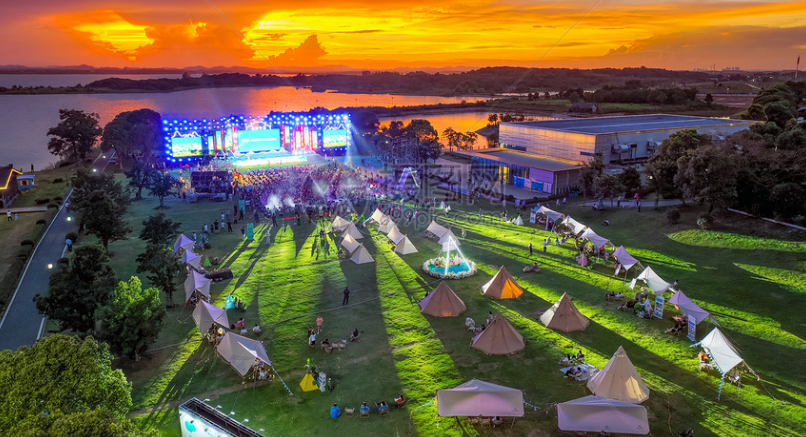Introduction
Lighting technology has undergone revolutionary changes in the past decades. From traditional halogen lamps to intelligent moving heads, from manual dimmers to sophisticated digital consoles, the pace of innovation has reshaped the way professionals approach stage, architectural, and commercial lighting. In recent years, cloud-based remote lighting control has emerged as a powerful new concept, promising convenience, scalability, and smart integration.
This article examines whether cloud-based remote lighting control will truly become mainstream in the future. We will explore its current applications, advantages, challenges, and potential for growth. Additionally, we will discuss the role of leading companies such as Blue Sea Lighting in advancing this trend.

1. Understanding Cloud-Based Lighting Control
Cloud-based remote lighting control refers to managing lighting systems over the internet, using centralized platforms hosted in the cloud. Unlike traditional methods that require physical presence at a console, cloud solutions enable technicians and designers to:
Access controls from anywhere in the world.
Monitor system health in real time.
Update software and presets remotely.
Synchronize multiple venues with one system.
This paradigm represents a shift from local hardware dependence to distributed, network-driven intelligence.
2. The Advantages of Cloud-Based Lighting Control
Remote Accessibility
Technicians can adjust lighting scenes for concerts, theaters, or events without being physically present, reducing travel time and increasing efficiency.Scalability
Large-scale productions often involve multiple venues. Cloud-based systems allow centralized control, enabling standardized programming across global operations.Cost Efficiency
Reduced hardware requirements, lower maintenance costs, and minimal staffing needs make cloud systems financially appealing.Integration with Smart Technologies
Cloud platforms can integrate with IoT devices, sensors, and AI, enabling features such as adaptive lighting based on audience movement or energy-saving automation.Real-Time Updates
Firmware upgrades and system patches can be pushed instantly to all connected devices, ensuring consistency and reliability.
3. Real-World Applications
Cloud-based lighting control is already being adopted in multiple industries:
Entertainment Venues: Large concerts and festivals can be pre-programmed and controlled remotely, even across continents.
Theaters and Performing Arts: Directors can collaborate with lighting designers remotely, fine-tuning cues in real time.
Architectural Lighting: Skyscrapers and landmarks can synchronize displays globally for celebrations or awareness campaigns.
Corporate Events: Companies benefit from consistent branding by controlling event lighting remotely.
4. Challenges and Limitations
Internet Dependence
Reliable, high-speed internet is crucial. Network interruptions could disrupt live events.Cybersecurity Risks
Remote systems face threats of hacking or unauthorized access. Advanced encryption and firewalls are mandatory.Latency Issues
While 5G and fiber networks reduce lag, real-time precision control may still face microsecond delays compared to local systems.Initial Adoption Resistance
Traditional lighting professionals may hesitate to abandon tried-and-tested hardware consoles.
5. The Role of Blue Sea Lighting
As a pioneer in the industry, Blue Sea Lighting plays a significant role in shaping the future of cloud lighting control. By embracing innovation, developing reliable hardware, and integrating with cloud-based platforms, they ensure professionals have access to cutting-edge solutions that balance creativity with reliability.
Their expertise demonstrates that cloud adoption does not eliminate physical lighting artistry but enhances it, giving designers new tools to push creative boundaries.
6. Integration with AI and IoT
The future of cloud lighting control lies in synergy with artificial intelligence and the Internet of Things (IoT). AI-driven platforms can:
Predict energy usage.
Automate scene transitions.
Adapt lighting to real-time audience interaction.
IoT sensors can measure environmental conditions, automatically adjusting brightness, color temperature, or effects to optimize performance and sustainability.
7. The Role of 5G in Cloud Lighting
With the rollout of 5G networks, the promise of ultra-low latency and high bandwidth makes remote lighting control more reliable. 5G will allow lighting engineers to operate systems with near-instant response, even for large-scale synchronized shows involving hundreds of fixtures.
8. Will It Become Mainstream?
The trajectory suggests that cloud-based remote lighting control will indeed become mainstream within the next decade. Its advantages outweigh its limitations, especially as network infrastructure improves and cybersecurity standards evolve. Early adopters in entertainment, architecture, and commercial spaces already showcase the system’s transformative potential.
9. Conclusion
Cloud-based remote lighting control is more than a passing trend—it represents the future of stage and architectural lighting. Its ability to merge efficiency, flexibility, and innovation positions it as a cornerstone of tomorrow’s lighting industry. Supported by innovators like Blue Sea Lighting, professionals can look forward to a future where creativity knows no geographical limits.





Blue Sea Lighting is an enterprise with rich experience in the integration of industry and trade in stage lighting and stage special effects related equipment. Its products include moving head lights, par lights, wall washer lights, logo gobo projector lights, power distributor, stage effects such as electronic fireworks machines, snow machines, smoke bubble machines, and related accessories such as light clamps.
Quick Links
For more questions subscribe to our email








